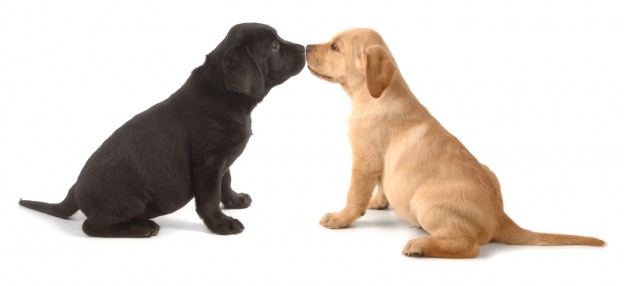
New research underway in the UK has dogs incredible sense of smell at the forefront of disease detection, reports Sonia Hickey.
The joke goes like this: a man runs into the vet’s office carrying his parrot, screaming for help. The vet rushes him into an examination room. He carefully examines the still, limp body of the parrot and after a few moments tells the man that his bird, regrettably, is dead.
The man, clearly agitated and not willing to accept this diagnosis, demands a second opinion. The vet goes into the back room, comes out with a cat, and puts the cat down next to the parrot. The cat sniffs, walks around and finally looks at the vet and meows. The vet looks at the man and says, I’m sorry, but the cat thinks that your parrot is dead too.
The man is still unwilling to accept the prognosis, so the vet brings in a black Labrador. The dog sniffs the body, prods it gently and after some consideration looks at the vet and barks. The vet looks at the man and says, I’m sorry, but the dog also thinks your bird is dead.
The man finally thanks the vet and asks for the bill. Thatll be $500,” says the vet.
Five hundred bucks to tell me my parrot is dead? exclaims the man. That’s outrageous!
Well, the vet replies, Its $50 for my initial diagnosis. The additional costs are for the cat scan and lab test.
And while this is something you’re most likely to get a giggle out of over a pint at your local, new research being conducted in the UK means that this punch line soon wont be as far fetched as it seems: dogs are being used to detect cancer in humans.
Research into dogs ability to sniff out cancer started more than 20 years ago when a woman named Gill Lacy noticed that her dog took an unusual and persistent interest in a mole on her leg.
Eventually, Lacy couldnt ignore Trudis sniffing and licking and talked to her GP about the mole. The doctor removed it and subsequent tests proved the mole to be a melanoma the most serious form of skin cancer. Lacy was just 19 years old at the time and believes her beloved Dalmatian saved her life.Famed medical journal, The Lancet, published Lacys account in 1989 and, since then, dozens of other similar stories have also emerged, involving not only skin cancer, but also bowel, cervix and breast cancer.
Simultaneously, over the past two decades there has been a growing body of thought in medical circles that cancer may have an odour. This school of thought is based on the premise that cancer cells release small amounts of volatile substances not produced by normal cells, which dogs with their exquisite sense of smell are likely to be able to detect.
In the UK, retired orthopaedic surgeon Dr John Church has long been interested in a dogs potential ability to detect cancer and other diseases. After all, dogs are trained to sniff out bombs, drugs and earthquake victims buried under piles of rubble, but it was only recently that he found both the time and opportunity to assist in the establishment of Cancer and Bio-detection Dogs, a small charitable organisation in the UK.
Cancer has a specific odour
Cancer and Bio-detection Dogs is a run by a small team of committed enthusiasts. CEO Claire Guest says that the organisations first joint study, which was published in the British Medical Journal in 2004, showed that dogs can be trained to identify the odour of bladder cancer within urine.
This ground-breaking finding opens the way for a new method of diagnosing bladder cancer, which would be simple, quick and non-invasive, she says. The work of our team aims to harness the remarkable ability dogs have to detect smell, in order to learn which cancers have specific odours. This knowledge can then be used in the research and development of medical equipment that would be able to diagnose cancer quickly and simply. Aside from her responsibilities as CEO, Guest oversees the dog training program at Cancer and Bio-detection Dogs (she has more than 20 years experience in animal psychology and dog training).
Training each dog takes about 10 weeks. We teach the dogs scent discrimination, she says. The dogs are taught that there is a right and wrong answer, and they are rewarded when they get the answer right.
The most suitable dogs for this type of work are Labradors and Cocker Spaniels basically because both breeds have a high drive and are relatively easy to train.
Read the rest of this story in our current issue of Dogs Life (July/August #96)!
Love dogs? Why not visit our DOGSLife Directory



